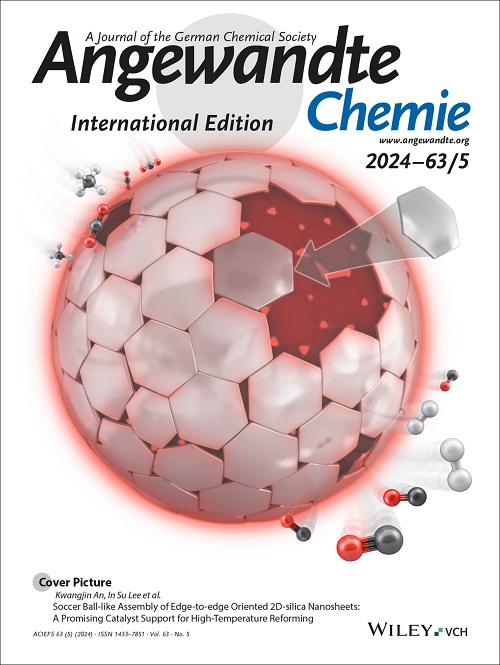Electrothermal Conversion of Methane to Methanol at Room Temperature with Phosphotungstic Acid
IF 16.1
1区 化学
Q1 CHEMISTRY, MULTIDISCIPLINARY
引用次数: 0
Abstract
Traditional methods for the aerobic oxidation of methane to methanol frequently require the use of noble metal catalysts or flammable H2-O2 mixtures. While electrochemical methods enhance safety and may avoid the use of noble metals, these processes suffer from low yields due to limited current density and/or low selectivity. Here, we design an electrothermal process to conduct aerobic oxidation of methane to methanol at room temperature using phosphotungstic acid (PTA) as a redox mediator. When electrochemically reduced, PTA activates methane with O2 to produce methanol selectively. The optimum productivity reaches 29.45 [[EQUATION]] with approximately 20.3% overall electron yield. Under continuous operation, we achieved 19.90 [[EQUATION]] catalytic activity, over 74.3% methanol selectivity, and 10 hours durability. This approach leverages reduced PTA to initiate thermal catalysis in solution phase, addressing slow methane oxidation kinetics and preventing overoxidations on electrode surfaces. The current density towards methanol production increased over 40 times compared with direct electrochemical processes. The in-situ generated hydroxyl radical, from the reaction of reduced PTA and oxygen, plays an important role in the methane conversion. This study demonstrates reduced polyoxotungstate as a viable platform to integrate thermo- and electrochemical methane oxidation at ambient conditions.用磷钨酸在室温下将甲烷电热转化为甲醇
将甲烷有氧氧化为甲醇的传统方法通常需要使用贵金属催化剂或易燃的 H2-O2 混合物。虽然电化学方法提高了安全性并可避免使用贵金属,但由于电流密度有限和/或选择性低,这些工艺的产量较低。在此,我们设计了一种电热工艺,利用磷钨酸(PTA)作为氧化还原介质,在室温下将甲烷有氧氧化为甲醇。当电化学还原时,PTA 会用氧气激活甲烷,从而选择性地产生甲醇。最佳生产率达到 29.45 [[方程]],总电子产率约为 20.3%。在连续操作下,我们实现了 19.90 [[EQUATION]] 的催化活性、超过 74.3% 的甲醇选择性和 10 小时的耐久性。这种方法利用降低的 PTA 在溶液相中启动热催化,解决了甲烷氧化动力学缓慢的问题,并防止了电极表面的过度氧化。与直接电化学过程相比,生产甲醇的电流密度提高了 40 多倍。还原型 PTA 与氧气反应产生的原位羟基自由基在甲烷转化过程中发挥了重要作用。这项研究表明,还原型多氧钨酸盐是在环境条件下将热氧化和电化学甲烷氧化结合起来的可行平台。
本文章由计算机程序翻译,如有差异,请以英文原文为准。
求助全文
约1分钟内获得全文
求助全文
来源期刊
CiteScore
26.60
自引率
6.60%
发文量
3549
审稿时长
1.5 months
期刊介绍:
Angewandte Chemie, a journal of the German Chemical Society (GDCh), maintains a leading position among scholarly journals in general chemistry with an impressive Impact Factor of 16.6 (2022 Journal Citation Reports, Clarivate, 2023). Published weekly in a reader-friendly format, it features new articles almost every day. Established in 1887, Angewandte Chemie is a prominent chemistry journal, offering a dynamic blend of Review-type articles, Highlights, Communications, and Research Articles on a weekly basis, making it unique in the field.

 求助内容:
求助内容: 应助结果提醒方式:
应助结果提醒方式:


